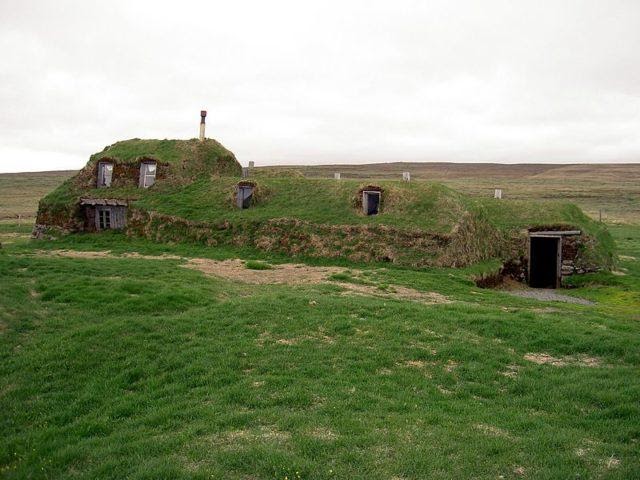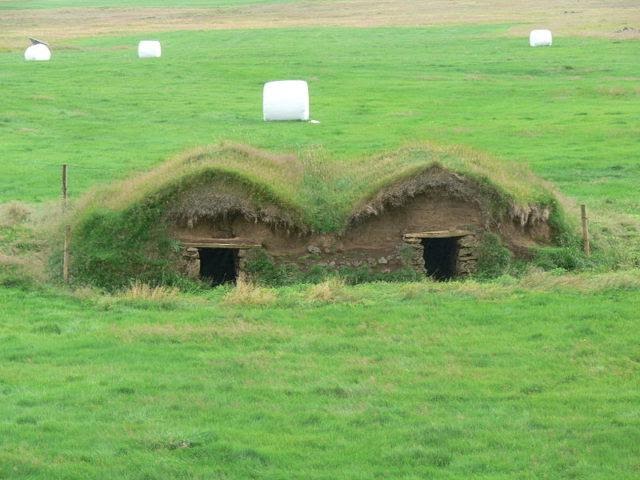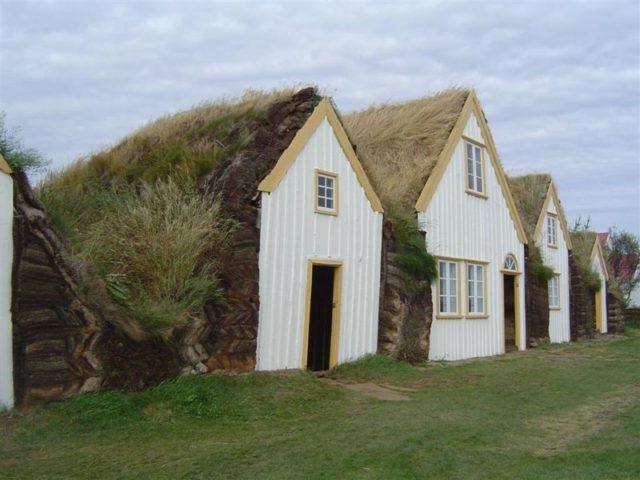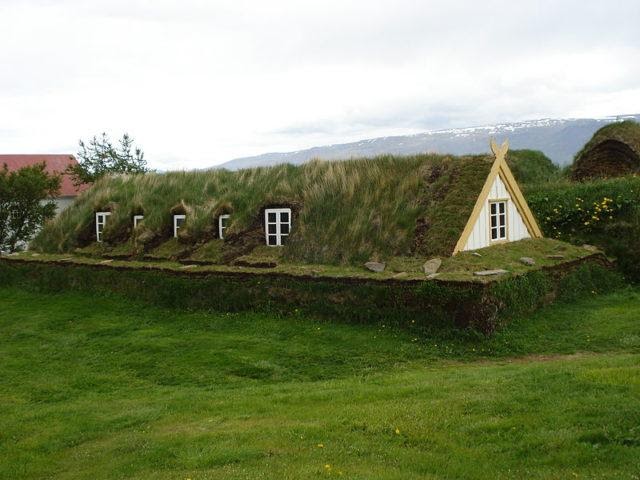Before the escalation of global warming, Northern Europe was a lot colder than it is now- and that’s saying something because the region is still bitingly cold for most of the year.
Since earth can act as natural insulation, people in Iceland began to construct houses out of turf (grass and the surface layer of earth held together by its roots). Dating back to the Iron Age, this architecture spread throughout Northern Europe and provided warm and cozy homes for the natives [1].
Among the people of Norway, Greenland, Ireland, and Finland, turf houses were mostly built by the lower class. However, in Iceland, turf homes cut across every socioeconomic class and were used as churches, stables, and even manors for wealthy natives. According to the UNESCO World Heritage List, for which the unique architecture was nominated, people enjoyed the warmth and protection from the elements that these turf structures provided.
Turf homes became a mode of culture in Iceland and today, they can still be found all over the country, standing as reminders of how creative people were ages and lifetimes ago.
Construction
When it’s not covered in snow, the Nordic country of Iceland is abundant in lush greenery and a generous supply of healthy grass. Far better than wood, stone, turf provided superior insulation from cold weather. Turf is also resistant to weather damage and can last decades before requiring replacement.
The frames of the houses were constructed using strong timber and then the turfs were lain over the entire structure, covering the roof, sides and excluding the front doors. Sometimes, the roofs would be underlain with slates and stones would be used for the walls. The structures were incredible pieces of natural architecture that would remain an iconic part of Iceland’s history [2].
Every 20 to 70 years, the turf is replaced with freshly-pulled wraps. Some of the turf houses, especially for farmhouse purposes, were built with passageways linking separate houses to look like one.

Over the centuries, as modern architecture evolved, the sizes and shapes of the turf houses progressively changed, but the basic building materials have remained the same.
Not many people are living in turf houses these days, and any that are still around are either used as museums or are abandoned. Modern heating technology has eliminated the need for turf insulation. However, the turf houses where Icelandic ancestors lived for centuries will always be part of a rich heritage and innovative culture that improved survival.
Notable turf houses in Iceland
This farmhouse in Keldur, Iceland was built between the 12th and 13th centuries and is one of the oldest turf structures in the country. It’s currently a museum and a popular tourist attraction.

Located in Núpsstaður in Fljótshverfi, this adorable little church is one of the few remaining turf churches in Iceland, built in 1657 and deconsecrated in 175 by the King ruling at the time.



Image Credits: Walls with Stories
Read More:
Aurora Borealis: Stare Up At the Northern Lights in A Luxury Glass Igloo
- Melisser Breyer. Icelandic Turf Houses are Old-screen Green with a Viking Twist. Tree Hugger. https://www.treehugger.com/slideshows/green-architecture/8-icelandic-turf-houses-old-school-green-Viking-twist/. Retrieved 24-01-2020
- Katerina Bulovska. Turf houses, the traditional green homes of Iceland with a Viking twist. Walls with Stories. https://www.wallswithstories.com/uncategorized/turf-houses-the-traditional-green-homes-of-iceland-with-a-viking-twist.html. Retrieved 24-01-2020

